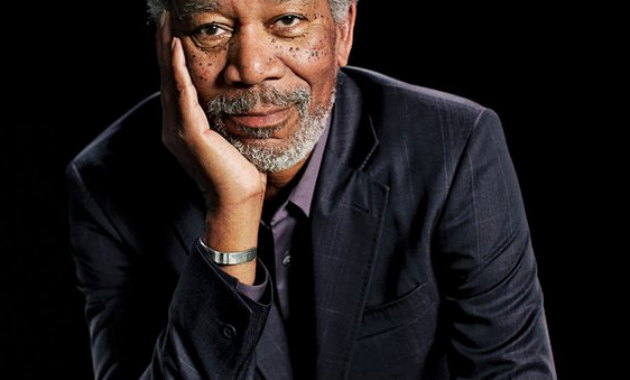
Introduction to Documentary Narrators
Documentary narrators are the unseen guides who lead viewers through the intricate landscapes of non-fiction storytelling. These skilled professionals use their voices to breathe life into visuals, providing context, explanation, and emotional depth to documentary films.
Definition and Role of Documentary Narrators
A documentary narrator is a voice artist who provides spoken commentary for documentary films, television shows, or other non-fiction media. Their primary role is to convey information, guide the audience through the narrative, and provide insights that complement the visual elements of the documentary. To explore the various approaches narrators can take, check out our guide on Types of Documentary Narration Styles.
Historical Evolution of Narration in Documentaries
The use of narration in documentaries has evolved significantly since the early days of film:
- Early 20th Century: Narration was often used to explain silent film footage.
- 1930s-1950s: The "Voice of God" style became popular, featuring authoritative, often male voices.
- 1960s-1970s: Direct Cinema and Cinéma Vérité movements reduced reliance on narration.
- 1980s-Present: Diverse narration styles emerged, including first-person narratives and character-driven approaches.
For a deeper dive into how narration techniques have changed over time and the impact of legendary voices in the field, explore our article on Famous Documentary Narrators and Their Techniques.
Importance of Narrators in Storytelling
Narrators play a crucial role in documentary storytelling by:
- Providing context and background information
- Guiding the viewer's attention and understanding
- Adding emotional depth and nuance to the visuals
- Bridging gaps in the visual narrative
- Offering expert insights or personal perspectives
The Impact of Narration on Documentary Storytelling
Effective narration can significantly enhance the impact and accessibility of a documentary, serving multiple crucial functions in the storytelling process.
Creating Emotional Connections
A skilled narrator can evoke emotions in the audience through:
- Tone of voice and inflection
- Pacing and pauses
- Word choice and phrasing
- Conveying the emotional subtext of the visuals
Clarifying Complex Information
Narrators help make complicated subjects more accessible by:
- Breaking down complex ideas into digestible parts
- Using analogies and metaphors to explain difficult concepts
- Providing historical or scientific context
- Highlighting key points and summarizing information
Enhancing Visual Storytelling
Narration complements and enhances the visual elements of a documentary by:
- Describing what cannot be seen on screen
- Providing background information on locations or subjects
- Explaining the significance of visual elements
- Guiding the viewer's interpretation of ambiguous visuals
Establishing Tone and Mood
The narrator's voice and delivery style can set the overall tone of the documentary:
- A somber tone for serious subjects
- An energetic tone for adventure or nature documentaries
- A neutral tone for objective reporting
- A personal tone for intimate or biographical stories
Bridging Scenes and Topics
Narration helps maintain narrative flow and coherence by:
- Transitioning between different scenes or locations
- Connecting seemingly disparate ideas or themes
- Providing temporal context (e.g., "Five years later...")
- Summarizing key points before moving to a new topic
To understand how filmmakers and producers choose the right voice for their projects, read our article on The Process of Selecting a Narrator for a Documentary.
Skills and Qualities of Effective Documentary Narrators

The best documentary narrators possess a unique set of skills and qualities that enable them to enhance the viewing experience and effectively convey the documentary's message. If you're aspiring to become a narrator yourself, our guide on How to Become a Documentary Narrator offers valuable insights and tips.
Vocal Clarity and Diction
- Clear enunciation and pronunciation
- Appropriate volume and projection
- Consistent vocal quality throughout long recording sessions
- Ability to handle complex or technical terminology
Emotional Range and Control
- Capacity to convey a wide spectrum of emotions
- Ability to modulate emotional intensity as needed
- Maintaining composure during emotionally challenging content
- Authenticity in emotional delivery
Timing and Pacing
- Synchronizing narration with visual elements
- Appropriate use of pauses for emphasis or reflection
- Adjusting speed to match the rhythm of the documentary
- Knowing when to step back and let the visuals speak for themselves
Ability to Simplify Complex Topics
- Breaking down intricate subjects into understandable parts
- Using accessible language without oversimplifying
- Employing analogies and metaphors effectively
- Maintaining accuracy while ensuring clarity
Adaptability to Different Subjects
- Versatility in handling various documentary genres (e.g., nature, history, science)
- Adjusting tone and style to suit the subject matter
- Quick learning and research skills to understand new topics
- Flexibility in working with different directors and production styles
For those looking to hone these skills, our article on Voice Training and Preparation for Documentary Narration provides practical exercises and techniques.
The Relationship Between Visuals and Narration
The interplay between visual elements and narration is crucial in creating a cohesive and impactful documentary experience.
Complementing vs. Competing with Visuals
- Narration should enhance, not overshadow, the visual content
- Balancing information delivery with visual exploration
- Using narration to provide context for ambiguous or complex visuals
- Knowing when to let powerful visuals speak for themselves
Using Silence Effectively
- Recognizing moments where silence is more powerful than narration
- Using pauses to allow viewers to absorb impactful visuals or information
- Creating rhythm and pacing through the alternation of narration and silence
- Allowing natural sounds or music to take center stage when appropriate
Timing Narration with On-Screen Action
- Synchronizing narration with relevant visual elements
- Anticipating visual changes to prepare viewers
- Using narration to guide viewer attention to specific on-screen details
- Adapting narration timing to the pace of visual editing
Describing vs. Interpreting Visuals
- Deciding when to objectively describe what's on screen
- Choosing moments to provide interpretive insights
- Balancing factual description with analytical commentary
- Using narration to reveal unseen aspects of visual subjects
Enhancing Mood through Vocal Performance
- Matching vocal tone to the emotional content of visuals
- Using pacing and rhythm to reinforce the visual mood
- Employing vocal techniques (whisper, emphasis) to heighten visual impact
- Maintaining consistency between narration style and visual aesthetics
To see how these principles are applied in practice, explore our Case Studies: Iconic Documentaries and Their Narrators.
Ethical Considerations in Documentary Narration
Documentary narrators play a crucial role in shaping the audience's perception of the subject matter, making ethical considerations paramount in their work.
Maintaining Objectivity
- Striving for impartiality in delivery, especially for journalistic documentaries
- Avoiding personal bias in tone or emphasis
- Clearly distinguishing between facts and opinions
- Presenting multiple perspectives fairly when appropriate
Handling Sensitive Topics
- Approaching difficult subjects with respect and empathy
- Maintaining appropriate emotional distance while conveying gravity
- Using appropriate language for sensitive content
- Being mindful of potential trauma triggers in narration
Representing Diverse Voices and Perspectives
- Ensuring fair representation of different viewpoints
- Avoiding stereotyping in language or tone
- Pronouncing names and terms from various cultures correctly
- Considering the impact of narrator choice on representation
Balancing Entertainment and Information
- Engaging the audience without sensationalizing
- Maintaining accuracy while creating an engaging narrative
- Using storytelling techniques responsibly
- Avoiding oversimplification of complex issues for entertainment value
Addressing Bias and Point of View
- Acknowledging the documentary's perspective when relevant
- Transparently presenting the filmmaker's point of view
- Helping viewers understand potential biases in the content
- Maintaining professionalism when narrating content that challenges personal views
By adhering to these ethical considerations, documentary narrators can contribute to the creation of responsible, impactful, and trustworthy non-fiction content.
As technology continues to evolve, so does the field of documentary narration. To stay ahead of the curve, read our article on Technology and the Future of Documentary Narration.
For those looking to delve deeper into the world of documentary narration, we've compiled a list of Resources for Aspiring Documentary Narrators to help you on your journey.

